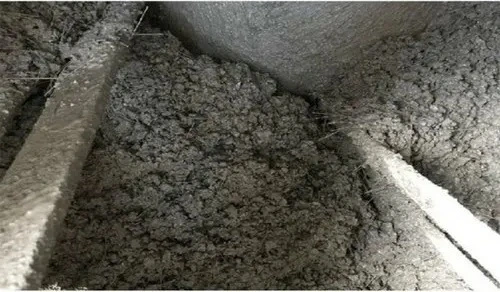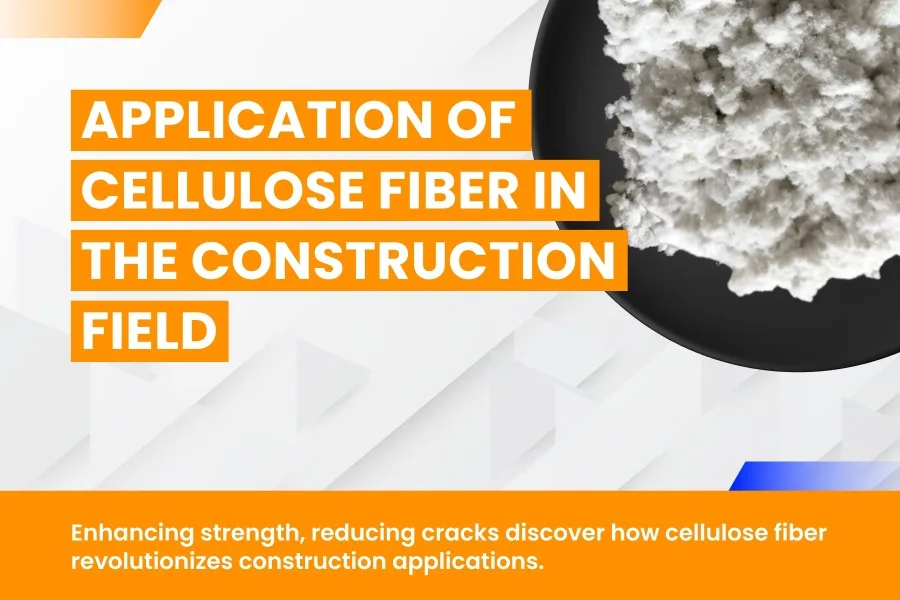Because cellulose fiber is a naturally sourced, naturally derived, and renewable material, its use is increasing within the construction sector.
More nesting for cellulose fiber products is about to take place because of its energy efficiency, as a product, and its overall performance has earned the attention of architects and engineers.
As the world pivots to sustainable and energy-efficient building solutions, cellulose fiber is certainly one of the most, if not the most, exciting and valuable materials that can meet both concerns for the environment as well as overall functionality.
Table of Contents
Sakshi Chem Sciences is one of the main competitors in the chemical solutions sector and is always working to provide the best cellulose fiber products available.
There are numerous uses, from insulation to reinforcement, to resistance against moisture, etc. This post will examine the many uses of cellulose fiber in the construction industry and how Sakshi Chem Sciences is helping to promote greener, more reliable buildings.
Advantages of Cellulose Fiber in Construction
Aside from the fact that it is obtained from renewable plants, cellulose fiber is, environmentally, a better choice of fiber. But its environmental credentials only tell part of the story, since cellulose fiber has an excellent mechanical, thermal, and acoustic performance too.
Advantages of using cellulose fiber in construction practice are specifically summarized in the following considerations:
These fibers have relatively high tensile strength and flexibility.
These fibers have good thermal networking for insulation and thermal and acoustic soundproofing.
Cellulose fibers can provide some compatibility with other common, standard building materials.
This fiber source is renewable and biodegradable.
This material can be transparent cost cost-effective in time and dollars spent long term.
These attributes have led to its use in a wide range of construction applications, which are discussed below.

1. Cellulose Fiber in Building Materials
Cellulose fiber has an important role as a raw material for engineered wood products like fiberboard or particleboard. With the addition of cellulose fiber, the overall durability and strength of the composite materials are improved, resulting in longer-lasting applications in construction and interior use.
Cellulose fiber is also important in gypsum board, which is a common interior construction material, as cellulose fiber improves moisture resistance and dimensional stability for the board under variable environmental impacts.
2. Reinforcement Material in Concrete
One of the most significant applications of cellulose fiber is as a reinforcement additive in concrete. When added to cement-based materials, cellulose fiber improves the internal bond strength, reduces shrinkage, and minimizes cracks.
As a reinforcement feature, cellulose fiber is a practical way to prevent structural problems in:
- Pavements
- Renders
- Screeds
- Precast components, etc.
As a reinforcement in concrete, cellulose fiber improves the workability, cohesion, and softens the mix, which greatly improves concrete construction.
3. Thermal and Acoustic Insulation
Cellulose fiber is an effective thermal and acoustic insulation material that can be used in building insulation systems. Cellulose fiber is found in coatings such as:
- Wall coatings
- Plasters
- Acoustic applications
- Soundproof barriers
Thanks to its low thermal conductivity, CT is a good insulator to keep indoor temperatures stable and can limit the use of artificial heating and cooling. This makes cellulose fiber a major player in energy-efficient built environments.
4. Usage in Bioplastics and Polymer Composites
Cellulose fiber is not just for traditional building applications, but functions in bioplastics and polymer composite production. Lignin, a high-purity product made during cellulose processing, is also used to make sustainable substitutes for synthetic products.
Examples include:
- Polyurethane foams
- Rubber composites
- Reinforced plastics
These materials are useful because they reduce our reliance on petroleum-based products, but still allow for a more environmentally friendly approach to construction material science.
5. Biomass Energy Applications
The organic nature of cellulose fiber also makes it applicable in biomass fuel. It can be fermented by microbes to produce renewable biofuels such as ethanol.
This renewable energy source can be used for:
Heating on-site construction
Renewable energy technology for buildings
This is especially impressive as cellulose can be used for both the structure and the primary means of energy production.
Cellulose Fiber Products
a wide range of specialty cellulose fiber products that are high-performance related, flexible, and meet a diverse set of applications in construction.
Each product is designed to solely focus on critical attributes of particle size, fiber length, and physical properties as necessary. The following is a summary of their cellulose fiber products:
SCF60
Appearance: Fine white powder with a fiber length of approximately 60 µm.
Applications: Lightweight plasters, decorative renders, and fine-grade mortars.
Benefits: Improves workability, reduces cracking, and improves spreadability.
SCF200
Appearance: Powder with medium fiber size.
Applications: Tile adhesives, grouts, and leveling compounds.
Benefits: Provides improved water retention and consistency in a mix.
SCF300
Appearance: Fibrous to powdery.
Applications: Sealants, joint fillers, wall putties, and coatings.
Benefits: Increases viscosity and stabilizes chemical formulations.
SCF500
Appearance: White fibrous powder with a fiber length of 500 µm.
Applications: Cement-based systems, floor screeds, and exterior renders.
Benefits: Increases mechanical strength and reduces shrinkage while curing.
SCF800
Appearance: Fine fibrous powder produced by advanced processing.
Applications: Waterproofing chemicals, adhesives, and multi-purpose construction products.
Benefits: Provides greater binding, versatility, and environmental resistance.
These products consist of formulations that consistently provide performance that supports sustainable construction requirements.
Advantages of Using Cellulose Fiber Products in Construction
Using cellulose fiber solutions from Sakshi Chem Sciences can deliver many benefits:
Sustainability: reduces our carbon footprint and, as a result, provides green certification
Durability: enhances the life and structural integrity of materials
Energy-Efficiency: enhances insulation to further reduce energy use
Crack Resistance: reduces shrinkage and micro-cracking in cement products
Versatility: can work with a wide range of construction chemicals (ex., polymers, plastics, additives) and processes (ex., batch mixing, premix, on-site laser concrete printing, etc.)

Conclusion: A Greener Future with Cellulose Fiber
The introduction of cellulose fiber in the construction industry is changing how we build today, as well as how we will be building in the future.
Cellulose fiber has taken on numerous roles in modern construction, including structural enhancement, insulation, and energy. Cellulose fiber is helping to reshape construction in modern terms of sustainability, efficiency, and performance.
Sakshi Chem Sciences is a major market participant in this renewed construction industry, with cellulose fiber products strategically developed for today’s professionals.
As the industry continues to evolve, the potential for renewable, high-performing construction materials, such as cellulose fiber, will only continue to expand, placing it as the future elemental role in imminent building practices.
Using cellulose fiber is not just a disruption, it’s a step in building a better, greener future.


